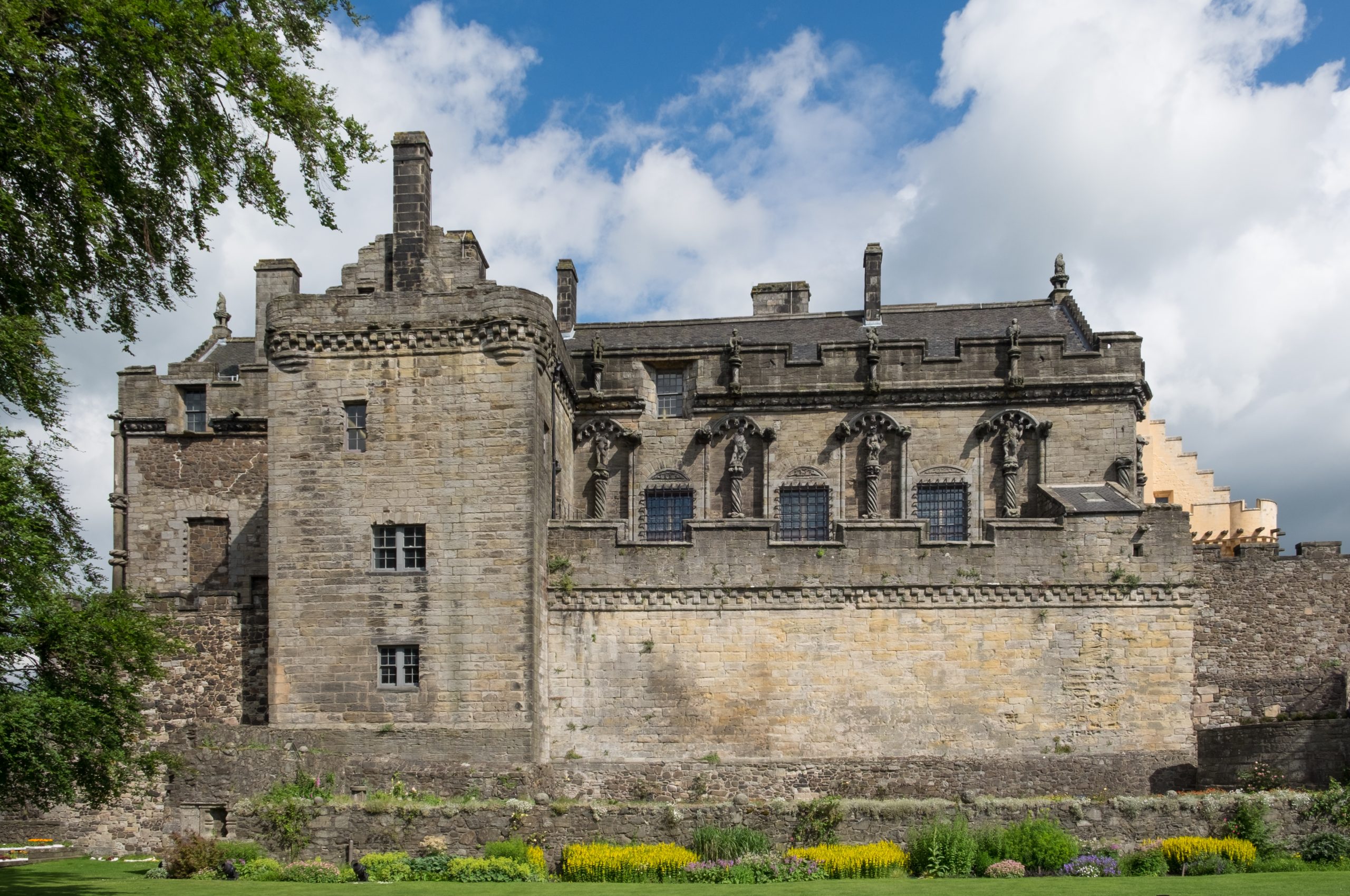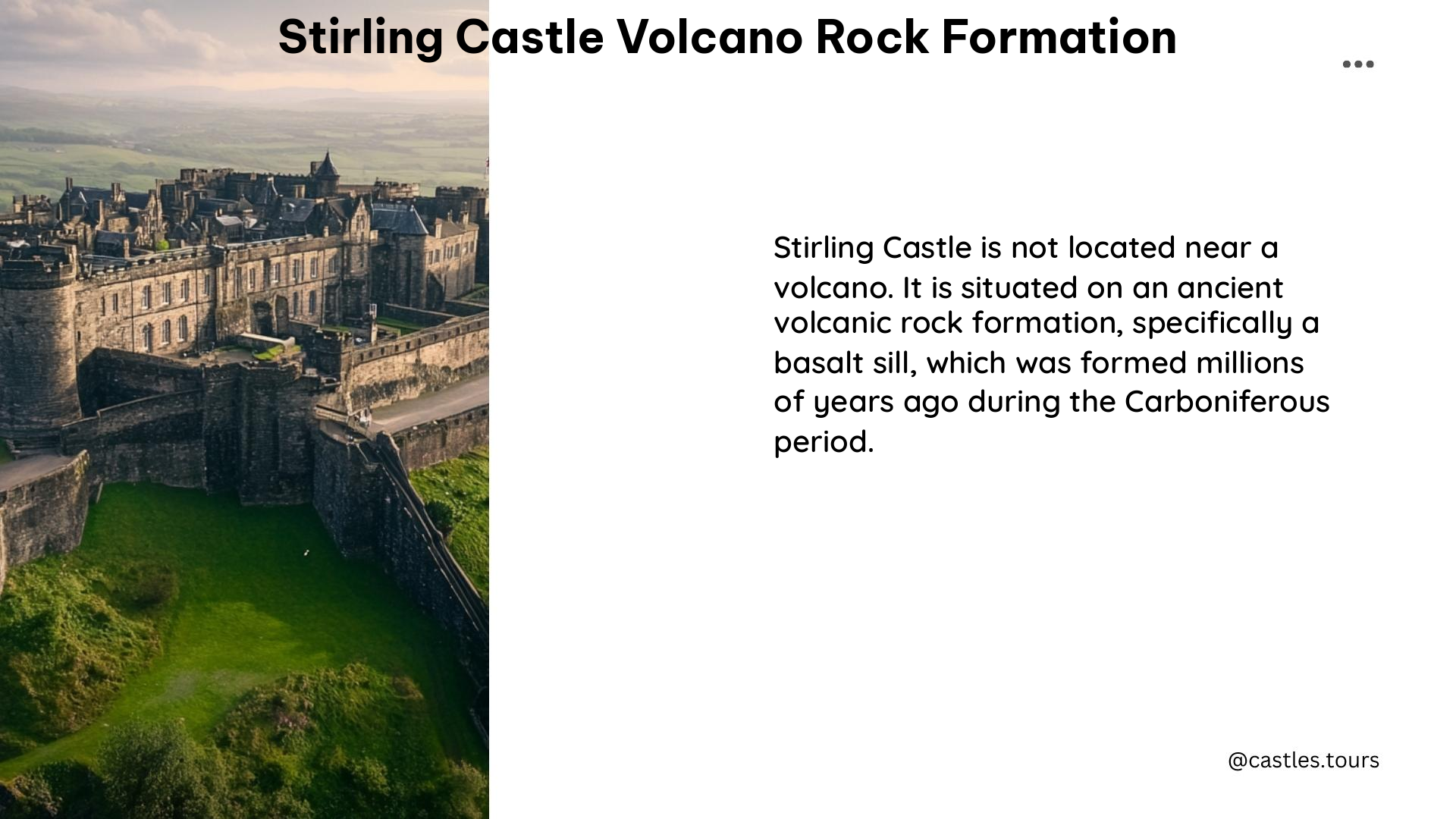Stirling Castle, a renowned Scottish landmark, sits atop a volcanic outcrop known as the Stirling Sill, a geological formation of quartz-dolerite that dates back around 350 million years. This volcanic rock was formed as a result of a volcanic eruption and was later modified by glaciation, creating a unique “crag and tail” formation that has played a crucial role in the castle’s strategic importance throughout history.
The Stirling Sill: A Volcanic Masterpiece

The Stirling Sill, the geological formation underlying Stirling Castle, is a remarkable example of volcanic activity that occurred millions of years ago. This quartz-dolerite rock, formed during the Carboniferous period, was created when molten rock, or magma, cooled and solidified beneath the Earth’s surface. The resulting rock is known for its distinctive hexagonal columns, a testament to the slow cooling process that allowed the minerals to crystallize in a structured pattern.
Glacial Shaping: The “Crag and Tail” Formation

The Stirling Sill was further shaped by the powerful forces of glaciation during the last Ice Age, approximately 10,000 years ago. As glaciers advanced and retreated, they eroded the surrounding softer rock, leaving behind the more resistant volcanic rock in the form of a “crag and tail” formation. The steep cliffs on three sides of the rock, known as the “crag,” were formed by the glaciers’ erosive power, while the gentler slope on the fourth side, the “tail,” was created by the deposition of glacial debris.
Strategic Significance: A Formidable Stronghold
The unique geological features of the Stirling Sill made it an ideal location for a defensive stronghold. The steep cliffs on three sides of the rock provided a natural barrier against invaders, making it difficult for attackers to approach the castle. Additionally, the castle’s strategic location at the crossroads between the Highlands and the Forth Valley allowed it to control a crucial transportation route, making it a significant player in various conflicts, including the Wars of Scottish Independence.
Visiting Stirling Castle: Exploring the Volcanic Landscape
Today, Stirling Castle stands as a testament to Scotland’s rich history and the geological forces that have shaped its landscape. Visitors can explore the castle’s impressive architecture, learn about its role in Scottish history, and marvel at the stunning natural surroundings, including the volcanic rock formation that has been integral to the castle’s strategic importance for centuries.
Key Facts about Stirling Castle and the Stirling Sill
| Fact | Detail |
|---|---|
| Location | Stirling, Scotland |
| Geological Formation | Stirling Sill, quartz-dolerite, approximately 350 million years old |
| Defensive Features | Steep cliffs on three sides, natural barrier against invasion |
| Historical Significance | Key stronghold in the Wars of Scottish Independence, strategic location controlling the crossroads between the Highlands and the Forth Valley |
| Admission Prices | Typically around £16-18 for adults and £9-10 for children |
| Opening Hours | Varying hours depending on the season; typically 9:30 am to 6:00 pm in summer and 9:30 am to 5:00 pm in winter |
| Management | Managed by Historic Environment Scotland |
Whether you’re a history enthusiast, a geology buff, or simply someone who appreciates the natural beauty of Scotland, a visit to Stirling Castle and the Stirling Sill is sure to leave a lasting impression. Explore the volcanic rock formation that has played a pivotal role in the castle’s strategic importance and immerse yourself in the rich history that has unfolded on this remarkable site.
References
- Historic Environment Scotland. (n.d.). Stirling Castle: History. Retrieved from https://www.historicenvironment.scot/visit-a-place/places/stirling-castle/history/
- Wikipedia. (n.d.). Stirling Castle. Retrieved from https://en.wikipedia.org/wiki/Stirling_Castle
- MONTECRISTO. (2017, January 13). Scotland’s Stirling Castle. Retrieved from https://montecristomagazine.com/travel/scotlands-stirling-castle
- Erratic Engineeress. (2021, June 5). Stirling castle. Retrieved from https://erraticengineeress.blog/stirling-castle/
- BBC. (2017, May 24). The last castle of Scotland. Retrieved from https://www.bbc.com/travel/article/20170524-stirling-castle-the-last-stronghold-of-scotland
